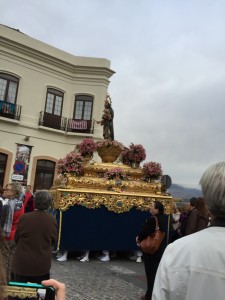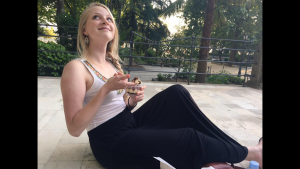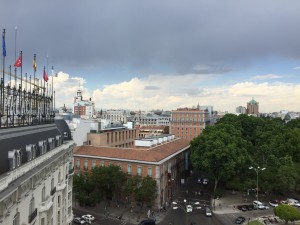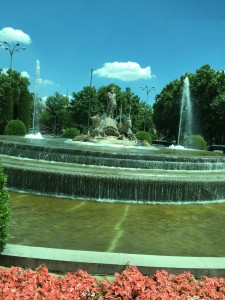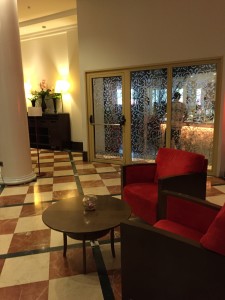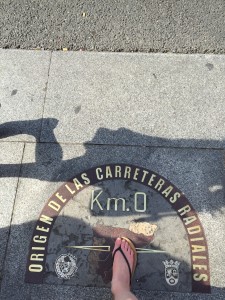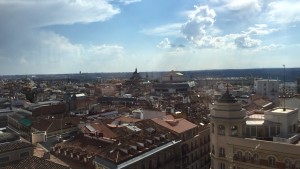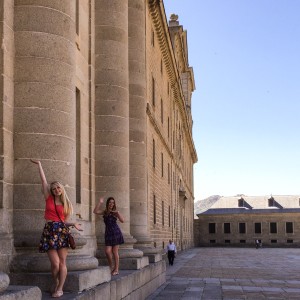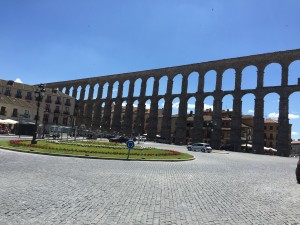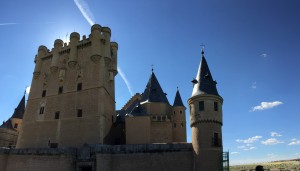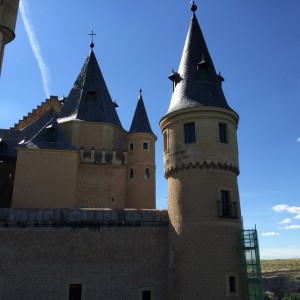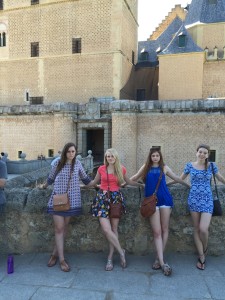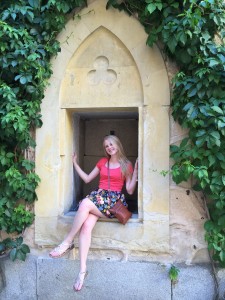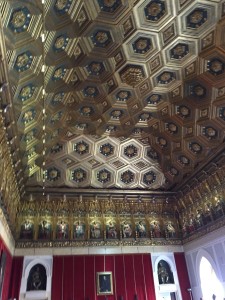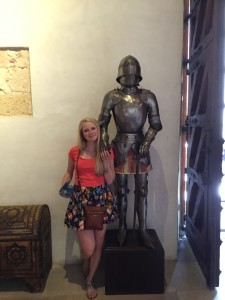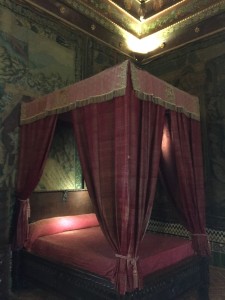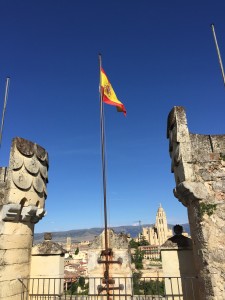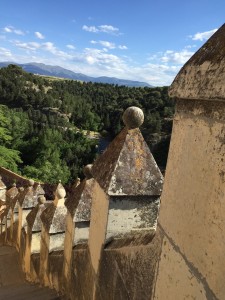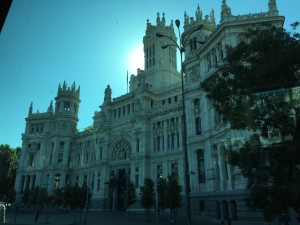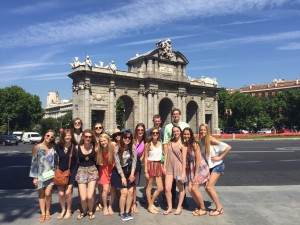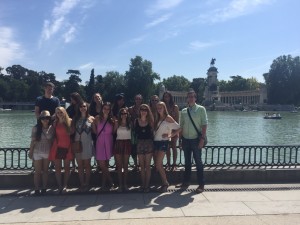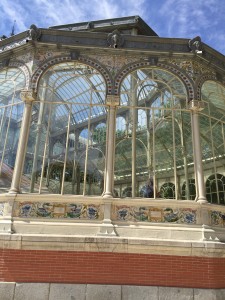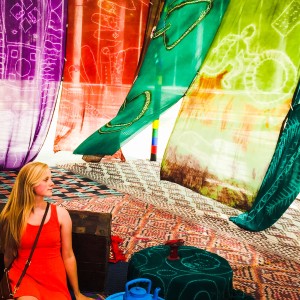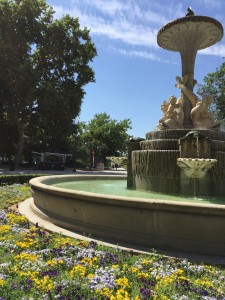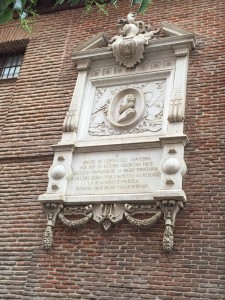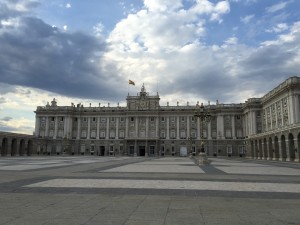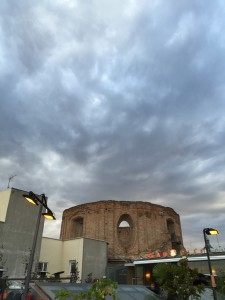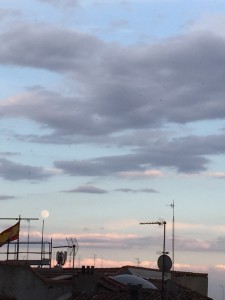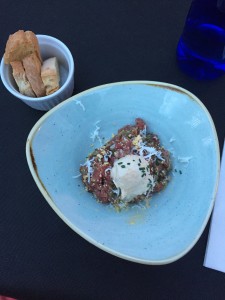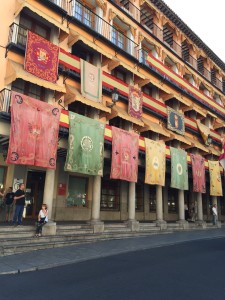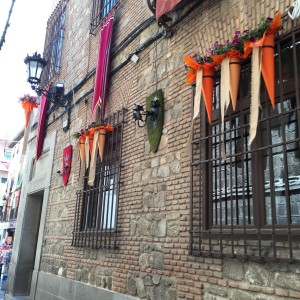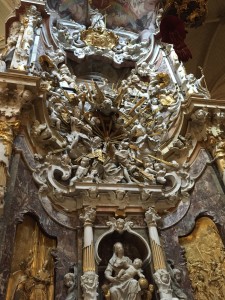The day that followed Sevilla was a combination of deberes (homework) and siestas (naps). It also happened to be Election Day, which I found to be odd since ours is usually a Tuesday. In any case, we’d seen the current mayor at school the week prior, but she was the only one out of all 10+ candidates that I knew. Our host mom said that they’d know who won around 8 pm. Coincidentally, we decided to go to dinner around that time and when we got to the plaza it was filled to the brim with people and music and a huge procession. At first we thought that they were celebrating the reelection of Mary Paz (the name of the mayor) but later we found out that it was just another festival. That’s the thing about Ronda. There are so many festivals and so many parades that it’s not weird at all for the people who live there whereas for us it’s considered a big event. Kind of like Penn State’s Homecoming parade. There aren’t many things of the sort but when they happen, people make sure to attend.
Monday and Wednesday of that week we went to dance classes for sevillana, the typical dance style in Andalucia. They took place in the school that we were supposed to have class in which is way across town, but it was still cool to see. The classes were so funny considering that none of us are particularly skilled in the dance department, but we enjoyed it all the same. There are four types of sevillana, and we touched on all of them but primarily the first two. The third and fourth are more difficult, but easier I imagine for those who already know the others. We were also shown some bachata and salsa for a bit on Wednesday but it all turned into some Spanish Zumba, a blessing for all of us double left footers.
Afterwards, we didn’t really know what we wanted for dinner so we all got different foods from a supermarket called Mercadona. I got 2 kilos of strawberries for a euro and a half with some tarta de queso (cheesecake) and tiramisu. Healthy, right? 10/10 would recommend everything EXCEPT the tiramisu. Imagine a puddle of unflavored liquor at the bottom of the cup that soaks into the dessert. While the top was good, I can’t say that the bottom half was my cup of tea. Other people bought chorizo, a type of Spanish sausage, while some had straight bags of spinach. Even though it was a makeshift dinner, I’d have to say that it’s one of the best we had.
Waiting for Madrid
Since one of our activities got canceled that week, we had free days on Thursday and Friday where we caught up on all of our homework and took advantage of siestas. But Saturday was the day. With a 7:30 am bus call, we were off to the country’s renowned capital and couldn’t be more excited.
The trip in itself was 6 hours, but it took us 8 because the bus driver was required to take breaks. His name was Ángel. Complete with our Ho-o-o-ola’s and counting system (everyone gets a number and we count off to make sure that we have the whole group when we’re on excursions), we loved him.
Once we arrived, one thing was clear–Madrid is HUGE. The hotel we stayed at was part of NH Collection and called Paseo del Prado near a fountain by the name of Neptune.
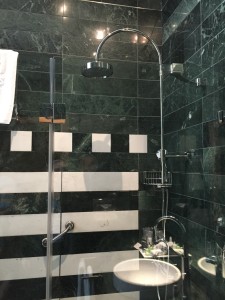
The beautiful shower with the head mounted on the wall (aka no need to hold it while showering…more on this later)
After some naps, we headed out for a walk around the town. We saw some very important landmarks like Kilometro Cero and El Corte Inglès…jokes. It’s not a technical landmark, but it’s so popular in Spain that it might as well be. If you’re not familiar, think about Target and Macy’s combined with designer products, a restaurant, and healthcare. I have never seen a bigger building with only one store. If ever presented with the chance, go. American department stores pale in comparison. We went solely for the view of the skyline, but seeing the store was an experience in itself.
El Escorial & Segovia
The next day we set off for a place I’d never heard of–El Escorial. It in itself is a smaller village, but we went to see its monastery. Huge is an understatement. We toured the inside and while we weren’t allowed to take pictures, the place in itself was pretty memorable if for nothing other than its size. We saw rooms where the King and Queen slept and learned that it was normal for the public to enter and watch them in their daily lives. Weird, right? I think I’d freak out if I woke up to someone staring at me everyday. Later on we saw tombs of all of the kings and queens and ran into some grumpy monks. Apparently they aren’t fans of tourists or being spoken to at all. This surprised me considering that they’re surrounded by both things fairly often and weren’t said to be silent monks. Odd.
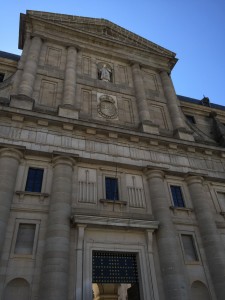
Once we finished at the monastery, we headed over to Segovia. Huge seemed to be a common theme that day because as soon as we arrived we saw the roman aqueducts. (Picture)
As the name implies, they are roman structure created to transport water across the city. After looking at them for a while and taking tons of pictures, we moved on to Segovia’s castle. We learned that it was the basis for Cinderella’s castle in Disney World. Small world, right? (Or in Spanish, el mundo es un pañuelo, which implies the same idea but actually translates to ‘the world is a tissue’. Speaking of Disney, I wonder what the Small World ride would sound like translated. “The world’s a tissue after all, the wooooorld’s a tissue aaafter all……”)
The next day we spent entirely in Madrid. Susana’s husband, Miguel, took us on a walk through a different part of the city.
We found ourselves at Buen Retiro Park. There we saw the most Pennsylvania-esque creatures of the trip: turtles, ducks, and very large lake fish. Beyond that was El Palacio de Cristal, which is what it sounds like. While it has some actual structure, it’s mainly composed of glass. Inside was an art exposition, one of the many that have the opportunity to be displayed there. They change about every two weeks, but I can’t imagine one being prettier than the one we saw.
Next on the agenda was La Reina Sofia museum. On the walk there we passed a few outdoor gyms with machines built into the ground and the whole nine yards. Who knew?
Once we got to La Reina, we meandered for a while until we found ourselves in front of Picasso’s Guernica. Unfortunately, this was another place where pictures were prohibited, but maybe that was for the best–pictures couldn’t have done it justice. Sometimes things just hit you straight in the face with no warnings. This was one of them. And sure, I’d read about it before and I knew that it was about a bomb on a certain village during the Spanish Civil War, but it was one of those things where you just don’t get it completely until you see it for yourself. Absolutely incredible. We must’ve stood there staring at it for twenty minutes or more without saying a word before we talked about it, but it was one of those things that you don’t get tired of looking at. Like Niagra Falls, for example. Every time you look you find something new to see even though the idea remains the same.
Following La Reina Sofia we headed to our next museum for the day, Paseo del Prado. This held Las Meninas by Velazquez, a painting I’d never seen before nor heard of but later learned that it was also incredibly famous. One of our professors, Dr. Blue, knows so much about Spanish art that it’s unbelievable. He pointed out that Velazquez puts himself in the painting, something that tends to be very uncommon and yet still executed perfectly by this gent. His use of lighting within the piece calls one’s attention to certain aspects of the painting while leaving some other subtler parts as they were originally, allowing the viewer to find them on his or her own.
We next went on our second stroll through the town where we saw the oldest plaza in Spain, Miguel Cervantes house, and a handful of other impressive places.
Following our walk, we hopped onto Madrid’s subway to go eat dinner in at a rooftop cafe. I ate beef ternera, which is essentially raw beef with spices and such. With the sunset in the background, it was the perfect wrap up for our last night in the city.
As glad as I was to collapse onto my bed afterwards and recuperate from hours and hours in museums that day, I knew that I’d learned an insurmountable amount about some of the most important pieces of their respective eras. That’s one thing I’ve learned about Spain–there is no end to the stories of the country’s history and the people who influenced it, both positively and negatively.
Toledo
On the fourth and final day we headed over to Toledo. The city in itself is unique in comparison to any other, being that it’s made mostly of Spanish brick (I think that’s an appropriate name to call it considering that I have yet to see it elsewhere). The streets were decorated with flowers, flags, and garland for a festival called Corpus Christi that would be happening the next day. While there, we went to see a painting called El Greco and learned about its meaning and the progression of the painting itself (no picture possibilities once again, sadly) On our way out, one of the students in our group ran into her teacher from a few years past without either of them knowing that the other would be there. Small world, huh?
Following El Greco, we went to the oldest synagogue in Spain. It was cool to have a change of pace and see a different sort of building since we’d been primarily visiting churches throughout the trip.
Post synagogue, we went to Toledo’s cathedral. This particular church had a type of sculpture that wasn’t present in any other, depicting different biblical images. The sculpture went up to and through the ceiling near a skylight.
Our trip to Toledo concluded with the walk back to the bus…in doing so we took some escalators down the side of a mountain?? They were outside and acted as a shortcut and a much better alternative to stairs considering its height.
With a great weekend coming to a close, we began the trek back to Ronda and officially met the halfway point in the program. How could it be that only two more weeks of school remained? Where in the world does the time go?
Location: Madrid, Toledo, Segovia, El Escorial
Loading map...




